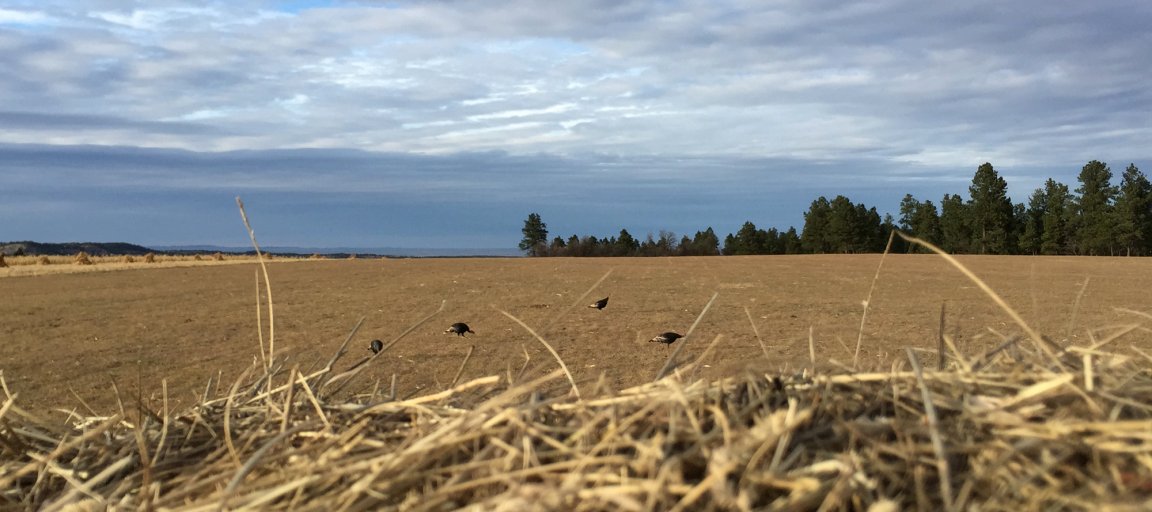Recent advances in technology have given wildlife biologists the ability to investigate daily behaviors of wildlife. These new investigations are providing insight on the fine-scale movements and decision making of animals. One of the scientists taking advantage of new technologies is Dr. Mike Byrne of the University of Georgia. Dr. Byrne and his colleagues set out to study how Rio Grande wild turkeys moved throughout their habitat during the day in Texas.
The researchers captured and collared male turkeys with GPS trackers that recorded each turkey’s location once every 20 minutes during the day from March to April. Turkeys are known to roost in one location through the duration of the night; therefore researchers only recorded turkey location three times every night.
The turkeys had access to corn-filled feeders, intended for white-tailed deer, and researchers found that those feeders impacted turkey movements. The collared turkeys spent most of their mornings in open habitats, and then moved towards feeders by midday. By the afternoon, the turkeys tended to move towards wooded edges adjacent to open areas.
Dr. Byrne suggests that there may be two reasons why the turkeys are using open habitats in the morning and midday. One reasons is that the males are congregating in areas with relatively few viewing obstructions so that they can display for females and be easily seen. The lack of visual obstructions also may provide added protection from ambush predators.
Additionally, the turkeys may be using the open habitats to loaf about during the warmest part of the day in areas that have water resources.
During the day, turkeys tended to avoid woody cover, only utilizing it in the evening as they prepared to roost for the night. Turkey movements during midday were short, slow movements that stayed within a relatively small area. During the evening, they engaged in more rapid and directed movements towards roosting sites.
While most veteran turkey hunters will recognize the movements and behaviors documented in the GPS study, the results of Dr. Byrne’s work may help sportsmen snag that long-bearded gobbler this spring. Specifically, be sure to set up along the edge of open areas that may have food plots or other resources. These areas will be prime real estate for gobblers to show off to hens and to grab a bite to eat.
If you can pinpoint where turkeys are roosting, the nearest open patch would be your best bet. The use of a hen decoy, putting down a food plot or finding areas with streams may help improve your chances as well. If you’re planning on going out later in the day, be aware that the gobblers will be less likely to hang around compared to the morning.
Though some of this information may seem like common sense to the seasoned turkey hunter, what’s important is that this research is the primer for some ground-breaking turkey research coming down the line. Dr. Byrne and other researchers at the University of Georgia are using fine scale turkey movements in conjunction with hunter movements to investigate not only how turkeys move throughout the landscape, but how the presence of a hunter influences their behavior. As technology advances and becomes more cost-effective, managers and researchers will be able to give the sportsman the upper hand during the season.
Source
Bryne, M.E., J.D. Guthrie, J. Hardin, B.A. Collier, and M.J. Chamberlain. 2014. Evaluating wild turkey movement ecology: An example using first-passage time analysis. Wildlife Society Bulletin 38:407-413.
